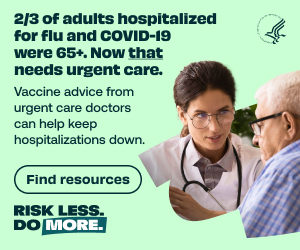According to the Rand Report, the ED routinely makes the most important decision for hospital survival – whether or not to admit. The next question is what the healthcare system will do with that information.
According to the Rand Report, the ED routinely makes the most important decision for hospital survival – whether or not to admit. The next question is what the healthcare system will do with that information.
In the wake of two landmark studies, from the RAND Corporation and the Emergency Department Benchmarking Alliance, it is imperative that emergency physicians digest, understand, and embrace the new data surrounding their practice.
First, these new studies show that the majority of the admissions process, particularly the decision whether to admit a patient, is shifting to the ED. RAND reported that during the period 2003-2009 “inpatient admissions to U.S. hospitals grew at a slower rate than the population overall.” That’s good for everyone. More patients are being managed as outpatients. In fact, admissions from doctors’ offices actually fell 10%. But admissions through the ED grew 17%. How and why did this happen? As RAND discovered through interviews, doctors’ offices direct their sickest patients to the ED. We all know that. In fact, patients calling private offices often receive a recording to the effect that, “if you think you are really sick, call 911 or go to Emergency”. It’s no slam on family physicians that they don’t, in most cases, have immediate access to the resources required to diagnose and stabilize really sick patients. Nor do they, in most cases, have the facilities to treat sick patients after office hours. So, in the best interest of quality patient care, they are being sent to the ED.
As Dr. Jim Augustine, vice president of the EDBA, explains, that means we are the front door to the hospital. EDBA data demonstrated that fact in stark fashion. The hospital lives or dies financially on the decisions made in the ED. Admit too many capitated or non-paying patients and the hospital starves for revenue. Get a reputation for being slow, impersonal, poor quality or lacking in coordination with other specialists and paying patients will find other places to take their healthcare dollars. The bottom line is that the ED doesn’t just impact the hospital’s livelihood – we are drivers of hospital survival. To take it a step further, emergency physicians who are not directly impacting their hospital’s strategic decision-making process are not doing their job. Emergency medicine was birthed as a specialty based on a new model of delivery of care, rather than an anatomic area of the body. Management of the hospital admission decision is our game. But it’s played at a much higher level than just the ED.
Beyond the politics of hospitals and patients, emergency physician decision making is integral to the whole health care cost debate. Politicians and pundits who have focused on the cost of a visit to the ED are missing the point when they conclude that one of the keys to healthcare cost containment is keeping people out of the ED. This simply isn’t going to happen. Patients go to the ED and doctors refer their patients to the ED for good reason. It may seem simple in hindsight, but the “sick vs. not sick” evaluation can be one of the most difficult in medicine. “Simple headaches” can be bleeds. “Simple fevers” can be sepsis, and so on. Make a mistake on one of these “simple” decisions and the results can be catastrophic. And while there are many healthcare costs that are out of the control of EPs, one of the biggest is the ‘simple’ decision to admit or send home. The very fact that the overall admission rate is falling as a function of the population is amazing, and a testament to the expertise of emergency physicians, given the higher proportion of an aging population with increasing co-morbidities. RAND noted that the cost of hospital admissions was 31% of the overall cost of medicine in America. That’s where EPs will impact the debate on healthcare cost containment. Better use of observation units, ‘admissions to home’ with close family physician follow-up, or even more intensive follow up by emergency department staff, are just a few of the ways that EPs can continue this trend of decreasing in-patient care.
Harping on the cost of emergency department visits, especially as it reflects on the charges of emergency physicians, is misguided and should be vocally opposed by every EP and our College. Break down some of the admittedly astronomical bills sent to patients for their visits to the ED and you will find that emergency physician professional charges are reasonable given all the factors of expertise required, hours of visitation, the risk entailed, and the collection rate. True inflation of emergency bills is largely the result of room charges, radiology, and lab charges – all of which make the EPs bill look cheap. We can look to ways of decreasing the cost of these services, but trying to squeeze the EP is muzzling the ox while it treads the grain.
The conclusion is this. Emergency departments are not the ‘loss leaders’ to the hospital as we have been led to believe for so many years. The ED is one of, if not the most, important department in the hospital. Emergency medicine is integral to the survival of the hospital and a key player in the nation’s overall efforts at cost containment through appropriate hospital utilization. Highlighting the cost of emergency medicine as an example of a bloated medical system is inaccurate. Streamlined emergency care can be the model for the provision of quality cost-efficient care to the sickest people, and to the sorting of the not-so-sick. EPs need to come out of the shadows and take hold of their role in the hospital and medical system as a whole. EPs need to embrace our role and continue to innovate new ways to provide highy quality, cost effective care. It is who we are.
Mark Plaster, MD, is the founder and executive editor of Emergency Physicians Monthly. He is also the author of Night Shift: Stories from the Life of an ER Doc, available for purchase on Amazon.com







